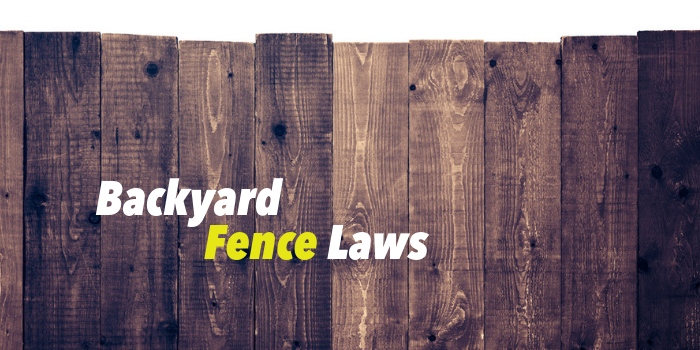Backyards often represent the extended privacy of your home. Whether it be your personal garden, hidden oasis, or outdoor sanctuary, your backyard is your business … or is it? If you share a majority, or even just a part of, your fence with another homeowner, your backyard fence is subject to more than only your own control.
Boundary Fences
A backyard fence that splits the property lines between neighbors is called a boundary fence. Each homeowner shares dual ownership of the allotted portion of the fence that exists on each respective property. This means that your neighbor(s) have the same rights to the shared fence as you do.
If you plan on building or remodeling the fence, you should be familiar with your plat or property survey as to not infringe on your neighbor’s property line. Additionally, communicate with your neighbor about your plans. By respecting the boundary fence, you can avoid awkward confrontations and instead nurture healthy relationships with your neighbors.
Fence Regulation and Guidelines
Backyard fences must comply with the rules that apply to them. State, county, and local laws may dictate specific limitations; however, most often, fences are subject to the rules of the HOA.
While local fence laws are loosely imposed, HOA regulations are strictly enforced. Some common guidelines for fences are as follows:
- Fences may need to abide by a minimum and/or maximum height. For example, your HOA may mandate fences be no less than five feet (5’) tall and no more than six feet (6’) wide.
- Referred to as a setback, fences may be required to be positioned a certain amount of feet from property lines. Consult your plat or property survey to assess where the fence can be constructed. Also, practice proper fence etiquette by making sure the smooth side of the fence faces outward, toward the street and your neighbors.
- Your HOA may only allow a specific wood or stain for the neighborhood. Many subdivisions strive for a harmonious aesthetic for fences. Check the bylaws for specific appearance requirements.
- Permit Requirements. You may need to obtain a permit with your county in order to construct or modify your backyard fence. Your application will need to be approved before you can advance with your project.
- Neighbor Influence. What if your neighbor doesn’t want the change? What if you’re the neighbor who doesn’t want the change? Your first move should be to communicate to the person(s) who co-own the fence: your neighbors.
Fence Variances and Disputes
Variances may be granted in some cases. Investigate your state’s statutes, county’s zoning ordinances, and HOA’s Covenants, Conditions, and Restrictions (CC&Rs) and bylaws.
Here are a few examples:
- Perhaps you need a taller fence than the law allows. Communicating with your neighbor can help ease the process along. If your neighbor objects to your request, the variance may not be accepted.
- Perhaps your neighbor is the one pursuing a modification to the boundary fence. If you have an issue with the construction, you can voice your concerns directly to the neighbor or contact your HOA.
- Perhaps you recently purchased a home and the fence seems to violate the laws that you’ve researched, but it’s possible the fence can remain. If the fence was built prior to the law, the fence is still legal. It’s important to educate yourself with not only the laws, but also the history of the fence itself.
Despite the many hoops and obstacles that may hinder the journey to your dream fence, a displeased neighbor remains the biggest hurdle. An unhappy neighbor means an unfortunate fate for your plans or theirs. By working together and following proper process, a satisfactory outcome is more likely.








This can be a much more complicated issue than your article seems to imply. Many times when it is time for a new fence, both sides want the finished side facing their yard and one neighbor may not contribute to the cost of replacement unless that is done. What is your suggestion then? Many times even if you only want to replace the fence as it is without changing any sides, you have “Neighbors” that still will not contribute and who knows for what reason.
I also want to note that many fences are not truly splitting the boundary line because they simply cannot. It may be due to a rock retaining wall or a drainage easement. Even then both residents gain benefit from the fence but just because it resides solely on one residents land should not dictate that it is solely that residents cost liability.
I think that the cost split should be 60/40 with 60% of the cost incurred by the neighbor that has the finished side facing their yard and 40% incurred by the neighbor with the post side facing their yard.
Lets face it, there comes a time when a fence just needs to be replaced. Like when it falls down every stiff wind. Is there a time when a neighbor should be forced to contribute to a fence cost when it has become a nuisance/eyesore or simple does not function for what its purpose is any longer and cannot be repaired without incurring considerable cost?
Then there is staining and agreeing on a color. We will save that for another conversation.